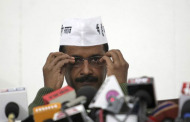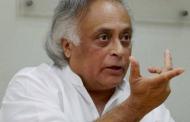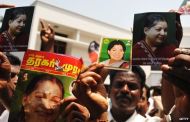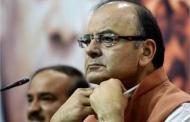Expect all you can from this Anand L Rai sequel. The film is a happy experience that will keep you in splits throughout. Right from the beginning, ‘Tanu Weds Manu Returns’ successfully keeps your attention intact, scene-per-scene. The old Hindi film song playing in the opening credit roll gives the screenplay such a typical ‘Indian wedding’ feel.
Director Anand L Rai has brilliantly executed what he wanted to in this sequel. The moment Tanu Trivedi (Kangana Ranaut) is seen talking in her patent Kanpuri style while visiting a medical centre, as she feels her husband of four years, Manu Sharma (R Madhavan) is mad—the audience just can’t help but burst out laughing.
The way in which Kangana enacts each scene, as if she has always been and lived as her on screen doppelgänger Tanu—is something which only a talented actress like her can pull off. The story takes off from the point where the original ended. The fact that Manu manages to win Tanu and gets married does not quite end in a ‘happily ever after’.
The storyline of the sequel kicks off from that point, and how differences crop up in any married couple’s life. The banter between Manu and Tanu sounds quite ‘real’ and is filled with comic moments. While Madhavan is superb in his own subtle, suave style of acting (we love him for keeping it understated), Kangana on the other hand is full of confidence, swag and what not.
How the conflict between Tanu and Manu takes her back to Kanpur, and how they meet again is something which is for you to find out on your own. But let’s get back to the plot and other characters who did a fabulous job. While watching this two hour delight, you just can’t escape Pappi ji (Deepak Dobriyal). His antics will bring a wide smile (rather a loud laughter) on your face for sure. This time, the actor has been given much more screen space than the original and yes he does stand out in the film.
So, Manu after his fight with his wife, comes to the capital city, and what does he find there, another Tanu? Thankfully, there is no ‘Kumbh Ka Mela’ to show that these two girls are ‘bichhdi hui behne’. There is absolute perfection in the way Kangana pulls off a Haryanavi-speaking Delhi University athlete – Kusum Sangwan. Her character is a pleasure to watch, and Ranaut deserves a thundering applause for making her look so believable and real.
Kusum is no Tanu, and the director has shown his brilliance in keeping their identities in contrast. The screenplay moves as ‘seedha-saadha’ Manu falls head-over-heels for Kusum, and in no time the love between them blossoms. The filmmaker through humour has even touched the serious problem of inter-caste marriage in Haryana. Although, Kusum faces the brunt of her old-fashioned relatives back home in Jhajhar but it is her elder brother Omi bhaiya, played by Rajesh Sharma, who backs her decision of marrying a divorcee (yes, Tanu slaps him with a notice).
An interesting character named Chintu (Zeeshan Ayub) has been introduced in the sequel, who in his ‘Rampuri’ avatar tries to create trouble and feels that he is in love with the super carefree Tanu. Jimmy Shergill reprises his role of Raja Awasthi from the original, and he looks adorable with that tinge of ‘bhaiyagiri’. However, this time he is shown to be a much more mellowed version of the prequel.
Eijaz Khan and Swara Bhaskar have played their parts well too. But it is undoubtedly Kangana who steals the show, hands down.
Music by Krsna Solo and Tanishk-Vayu is foot tapping and has a freshness to it. ‘Banno’, sung by Brijesh Shandllya, Swati Sharma and ‘Ghani Bawri’ by Jyoti Nooran is already reigning on the charts. Chirantan Das too needs a special mention for a smooth and colour-filled cinematography. A pat on back for dialogue writer Himanshu Sharma for giving us lines worth remembering.
Finally, there is so much more to write about and too little space. Our take—go grab a ticket and get swooned. Sometimes, you really need a part two to fall in love.
Kathmandu, May 23 (PTI) The death toll following the two devastating earthquakes that have struck Nepal has reached 8,635 with over 300 people, including 89 foreigners, still missing.
At least 79 foreigners, including 49 Indians have been killed in the devastating earthquakes, according to a statement by the Nepal police.
About 240 Nepalese nationals and 89 foreigners have still been missing since the April 25 earthquake, police said.
Of the total number of foreign military personnel deployed from 18 countries for rescue and search operations, 2,509 people, including 851 Indians, have already left the country after completing their assignments.
However, 1,807 foreign military personnel,?including 564 Indians, are in the process of returning to their home countries, according to a statement by the Nepal Army.
The 7.9-magnitude earthquake which struck Nepal on April 25 and another measuring 7.3 on the Richter Scale on May 12 have left 8,635 people dead, 21,845 injured and destroyed or damaged tens of thousands of houses.
Five aftershocks measuring between 4 to 5 on the Richter Scale were recorded yesterday. Over 255 aftershocks of over 4 magnitude have been recorded in the country since the April 25 earthquake.
Eight MI-17 helicopters and five ALH choppers from India, 3 MI-17 choppers from China, 3 UH1Y and 4 MV-228 choppers from the US have conducted their flights in search and rescue works, airlifting injured people, managing debris and supplying relief materials to various earthquake-hit areas.
Meanwhile, Nepal is facing a crunch of labourers in the aftermath of the devastating earthquake of April 25 as some 20,000 Nepali migrant labourers have left the country in the past one month.
After two earthquakes and a series of aftershocks, a large number of migrant workers have again started returning to foreign countries, which makes it difficult for the government to implement its plan to employ around 1,00,000 volunteers in rebuilding the quake affected districts, experts said.
Kathmandu, the capital city is also facing labour crunch as many skilled and semi-skilled Indian nationals, who were working in different service sectors have returned to their homes after the earthquake.
There is a shortage of barbers, plumbers, vegetable vendors and carpenters in Kathmandu these days as most of the labourers come from across the border, mainly from Uttar Pradesh and Bihar.
Rangers moved closer to a return to the Scottish Premiership with a 2-1 aggregate win over Hibs in the playoff semi-final match at Easter Road on Saturday.
The Glasgow giants, who lost their place in the top flight in 2012 after a financial meltdown, had won the first leg 2-0 at Ibrox on Wednesday.
A 0-1 loss on Saturday was enough to ease them through to a final playoff showdown with Motherwell who finished second from bottom of the Premier League.
Hibs, who were relegated through the playoffs last year, had most of the early pressure with Rangers Cammy Bell by far the busiest of the two goalkeepers
Veteran striker Kenny Miller — who scored one of their goals in the first leg — came closest for the Glasgow side after 25 minutes as the game started to even out, but Hibs should have gone ahead 10 minutes later.
Impressive midfielder Scott Allen burst through the middle and sent Congolese striker Dominique Malonga clear on the left but he could only shoot weakly straight at a relieved Bell.
Malonga went close again as the second-half got underway with a shot that fizzled just inches wide, but Rangers were in general managing to keep the game low-key which was just what they wanted.
Hibs piled forward in search of the goal that would get them back in the contest and they had a succession of desperate appeals for a penalty turned down.
The home side finally broke their goal drought with a superb strike from Jason Cummings deep into extra-time but it came too late in the day as Rangers moved to within two games of playing once again in the Scottish top flight.
If successful they will join Hearts – runaway winners of the Championship who were automatically promoted to replace bottom dogs St Mirren.
Panaji, May 23 (PTI) Goa Chief Minister Laxmikant Parsekar today refused to reduce the value added tax (VAT) on petrol.
“We will not reduce the VAT on petrol prices. There is no demand from people to reduce it. If VAT is reduced, petrol will cost lesser than diesel which is not a good situation,” Parsekar told reporters on the sidelines of an IT convention.
The BJP-led government had abolished VAT on petrol when it came to power in 2012 reducing the prices by Rs 11.
Later, the then Chief Minister Manohar Parrikar had imposed a VAT of 3.5 per cent on it which was later increased twice by Parsekar to 15 per cent.
Parsekar had said VAT would be reduced if petrol prices cross Rs 60 per litre mark.
The hike in petroleum prices last week had raised the petrol prices to Rs 63.50 per litre in the state.
Parsekar ruled out review of VAT on petrol products and said the increase in taxations was to compensate the losses due to mining closure.
The mining industry in the state has been closed since last more than two years.
New Delhi: The Aadmi Aadmi Party (AAP) government has called an emergency meeting of the Delhi Assembly on May 26 and 27, reports said on Saturday.
The meeting has been called by Delhi CM Arvind Kejriwal to discuss MHA notification over the distribution of powers between the Lieutenant Governor’s office and the Delhi Chief Minister’s office.
The Kejriwal government had also sought the opinion of legal and constitutional experts over the notification.
The MHA had issued the notification on Friday stating that the Lieutenant Governor has primacy in postings and transfers of officers belonging to Central services.
Delhi Chief Minister Arvind Kejriwal had reacted strongly to the notification, saying that the NDA Government at the Centre was trying to run the national capital through the ‘backdoor’.
Kejriwal had also stated that the notification was indicative of the Bharatiya Janata Party’s (BJP) nervousness about the Aam Aadmi Party’s anti-corruption efforts.
Meanwhile, Delhi Deputy Chief Minister Manish Sisodia had also criticised the notification, terming it as an attempt to “save the transfer-posting industry being run in Delhi”.
Bengaluru, May 23 (PTI) In a stinging attack on the one-year rule of NDA regime, Congress today accused the Prime Minister Narendra Modi of “murdering democratic institutions” in India and running a “one man government”.
Presenting a five-chapter report card on the Modi dispensation, Congress leader Jairam Ramesh said “MODI refers to Murder Of Democratic India” with its “maximum governance becoming maximum arrogance and minimum government becoming one man government”.
“Chapter one refers to MODI – Murder Of Democratic India; …in the last one year he has completely bypassed the Parliament, he rarely comes to Parliament, he was not present when constitution amendment bill on GST was voted in Lok Sabha,” Ramesh told reporters here.
In the last one year, of the 53 bills presented in Parliament, only five had gone to the standing committee, when normally all bills go to it, he said.
Ramesh described the five chapters of the report card as “murder” of democratic institutions, maximum governance becoming maximum arrogance and minimum government becoming one man government, turnaround becoming U-turns some positive some negative, repackaging of UPA programmes and sharp reduction in allocation for social sector schemes like health, drinking, water and sanitation.
“This in short is what Mr Modi has accomplished in the last one year,” he said.
The Congress leader also said that the “judiciary is threatened” citing Modi’s words at a conference of Chief Justices presided over by Chief Justice of India H L Dattu about “five star activists”.
He also lambasted the government on the delay in the appointment of Chief Information Commissioner and Chief Vigilance Commissioner.
Her conviction in a corruption scandal last year had cut short her fourth term as the chief minister, but earlier this month, an appeals court cleared her.
She will take oath on Saturday morning, officials said.
Her replacement O Panneerselvam quit on Friday, paving the way for her return.
Jayalalitha, a former actress, is one of India’s most colourful politicians.
She has been a leading figure in south Indian politics for three decades.
Ms Jayalalitha was convicted and sentenced for four years by a trial court last September.
She was found guilty of amassing unaccounted-for wealth of more than $10m (£6.4m) and had to quit as the chief minister.
The appeals court ruling earlier this month paved the way for her returning as the head of Tamil Nadu government.
On Friday morning, Tamil Nadu Governor K Rosaiah’s office said in a statement that Mr Panneerselvam, party leader and loyalist who was heading the government in her absence, resigned along with his cabinet ministers.
The governor accepted the resignations and invited Ms Jayalalitha to form a government “at the earliest”, the statement added.
Later in the afternoon, Ms Jayalalitha called on the governor and accepted his invitation to form the government.
Thousands of supporters flashed victory signs and threw flower petals at her car as it sped through the streets of Chennai.
Earlier, legislators belonging to her regional AIADMK party met and elected Ms Jayalalitha as the leader of the legislature party.
“This is the happiest day of our life,” former minister Sellur K Raju told the NDTV news channel.
Former actress who appeared in more than 100 films
Chief minister of Tamil Nadu on four occasions – from 1991-96, briefly in 2011, 2002-06 and 2011-14
Has alternated in power with her great rival, 90-year-old DMK party leader M Karunanidhi
Feted by various Indian prime ministers over the last 20 years trying to win her support
Critics accuse her of establishing a personality cult, but supporters praise her poverty relief efforts
Known for her extravagant lifestyle – police once discovered more than 10,000 saris and 750 pairs of shoes in a raid on her premises.
New Delhi, May 23 (PTI) Attacking Congress over dual power centres during UPA’s reign, BJP today said its rule has restored the credibility, dignity and stature of the post of Prime Minister, who has the last word in this government.
“UPA’s attempt to reduce the stature of Prime Minister’s position by setting up power centre outside the government, we always felt such a system cannot continue in a democracy and we have reversed that,” senior BJP leader and Finance Minister Arun Jaitley said at a press conference to mark the first anniversary of Narendra Modi government.
“The last year has restored the credibility, dignity and stature of the Prime Minister’s Office. In this government, the last word belongs to the Prime Minister and that is how it should be,” he said.
Jaitley asserted that the party has become the central pole of Indian politics and the national polity will now be guided along pro-BJP and anti-BJP lines.
BJP also announced a host of programmes including 200 big rallies and 5,000 public meetings across the country to mark the first anniversary of its government which all Union and state ministers, party MPs and office bearers will address.
Jaitley also said minorities in the country were safe and in the last one year, government has made attempts to ensure there is no social tension.
On provocative statements made by BJP leaders, he said they were told not to do so and some incidents like attacks on churches were found to be law and order issues.
“Today all such religious institutions have been provided with security, which was never there in the past,” he said.
He said the party and the government together displayed a lot of coordination and there is enthusiasm among party workers across the country. “Our party and our cadres are proud of our performance,” he asserted.
“Policy paralysis has been replaced by quick decision- making process, reluctance has been replaced by decisiveness.
There is clarity of direction in the government. A very big change is that corruption has been replaced by transparent governance.
Crony capitalism has been replaced by liberal policy-based governance,” he said
It was the front row of dreams: Cate Blanchett and Glenn Close gleaming in their white trouser suits; Leonardo DiCaprio hiding behind his beard; Tina Turner applauding wildly; Hilary Swank crossing her narrow, work-out legs; Lauren Hutton, gap-toothed; and eternal sex pot Sophia Loren, proving that life still sings at 80.
Giorgio Armani, nearly 81, celebrating 40 years of his fashion house, brought Hollywood to Milan to see a reprise of his 10-year-old Armani Privé couture line – and view the Silos building the designer has converted from a old grain factory. It is now transformed as a vibrant four-storey display of those years in fashion from bold androgyny to dreamy elegance.
I had to come – for him,” said Cate Blanchett, echoing the warmth that surrounded the designer throughout an evening that ended with a prolonged standing ovation.
That was after the 10 different show themes, from echoes of the ethnic to Chinoiserie with the shine of lacquered box, which were digitally projected on to a runway, filling the background with intense pattern and colour.
“I am very emotional,” Armani admitted earlier in the day, as he opened up the Silos building to his guests. “It’s a walk through 40 years, reminding me of all the people who have worked with me.”
Giorgio greeted me outside the spare stone-and-glass building facing his Milan headquarters, looking as we all know him so well: navy sportswear, illuminated at top and bottom by his silver hair and white sneakers.
He then gave me the privilege of a walkthrough of the four floors, showing me with his particular, quiet elegance. It started with the signature beige of his early daywear, in which trouser-clad women broke the sexist glass ceiling, and led on to the glamorous evening gowns worn by Hollywood. Thirteen separate display sections include outfits that are not done by year, but each mixing different pieces from the Italian maestro’s long career.
“I am nearly 81 years old – and I have given my life to this,” the designer said later, when we had crossed over to the original Armani building designed by Tadao Ando, where I have seen so many fashion shows – and where that evening’s elegant extravaganza would take place.
Polls have opened in Ireland, where voters are making history as the republic becomes the first nation to ask its electorate to legalise gay marriage.
More than 3m voters have been invited to cast ballots in Ireland’s 43 constituencies, with the result to follow on Saturday. Polling stations opened at 7am BST and they close at 10pm.
The voting follows a hard-fought and occasionally rancorous battle between conservative and liberal Ireland.
Though some 20 other countries worldwide have already legalised gay marriage, Ireland would be the first to do so through a referendum. The move would mark the culmination of an improbable journey in a country in which homosexual acts were still illegal as recently as 1993.
Ireland’s gay marriage referendum – the Guardian briefing
Read more
The Fine Gael-Labour government, alongside the main opposition parties, said they were confident that Ireland will vote yes today despite strong campaigning in the last few days by those opposed to same-sex marriage.
The government point to an extra 68,000 new people of voting age who have signed on to the electoral register within the last fortnight. The administration in Dublin sees this as a sign that younger voters will turn out in higher numbers than in previous referendums to back the yes side. In every opinion poll the yes camp has been ahead of the no side.
In his final live televised interview ahead of the polling stations opening, Ireland’s prime minister, Enda Kenny, urged voters to vote yes “for love and for equality”.
But the no campaign, comprised mainly of lay Catholic intellectuals, writers and activists, have warned that a yes vote will create a crisis of personal conscience in Ireland. An alliance of evangelical Catholics and Protestants have distributed more than 90,000 anti-gay marriage pamphlets over the last week across Ireland urging a no vote.
Paddy Monaghan, one of the co-ordinators of the alliance of 100 religious activists, issued a warning on the eve of the referendum.
Irish same-sex marriage referendum: the laws around the world
Read more
“We have warned in our pamphlet about the major implications on the issue of conscience if there is a yes vote on Friday. If there is a yes vote, will the Muslim printer in Ireland now be obliged to print cartoons of Muhammad? Redefining marriage is sold to us by the media and political establishment as a permissive measure but it will quickly become coercive,” Monaghan said.
Advertisement
In the last week of campaigning, the first female Anglican bishop in Ireland, England, Scotland or Wales, Pat Storey, has written to all her clergy in Meath and Kildare, explaining her reasons for voting no.
Focusing on fears stirred up by the no camp about children allegedly being forcibly adopted by gay couples, Bishop Storey said: “You cannot redefine marriage without including information and reference to children, family and the good of society. It is my view that, where possible, children benefit most from both genders parenting them. That is not to say that single parents who find themselves alone do not do an immensely great job in raising their children. Yet I believe that it is God’s intention that, where feasible, children should have a mother and father.”
Until this week the yes-no battle was coloured by accusations that opponents of gay marriage were misleading the public over claims about forced adoptions or same-sex couples having a supposed right to obtain children through surrogacy. The yes camp has pointed out that the commissioner overseeing the campaign has dismissed these claims and emphasised they were not connected to gay marriage.
In the last few days, the campaign has turned much uglier, with yes advocates revealing the amount of vitriolic abuse they have received. Irish Times writer Una Mullally tweeted a link to a letter she was sent which referred to her revelation during the campaign that she has cancer. The letter writer told her: “Sorry to hear about your cancer but maybe it is the will of God.”
#hometovote: Irish abroad return to vote in gay marriage referendum
Read more
Referring to Mullally’s going public about her illness, her sexuality and her support for the yes side, the letter writer continued: “After all you have been relentlessly pushing the twisted idea of gay marriage which would destroy the family as we know it and ruin the lives of generations of innocent children victimised by the narcissism of their ‘parents’.”
Mullally’s correspondent ended the letter with further personalised, racially tinged abuse directed at her and her partner: “My advice is to accept that you are both homosexual and not very pretty, as there are far worse fates; you might be black for instance.”
Meanwhile, Colm O’Gorman, the current executive director of Amnesty International Ireland, prominent yes campaigner and survivor of clerical child sex abuse, disclosed on Thursday that a no voter tweeted him a picture of a gay man being thrown to his death off a building by Islamic State extremists. O’Gorman said the image was vile.
Currently 17 countries, including Spain, France, Argentina and Denmark along with several states in the US, allow same-sex couples to marry, and two others have passed legislation paving the way for legalisation.
Ireland, however, is unique because it is the only nation to ask its electorate to endorse gay marriage in a plebiscite. The result will be known on Saturday afternoon.
















Recent Comments